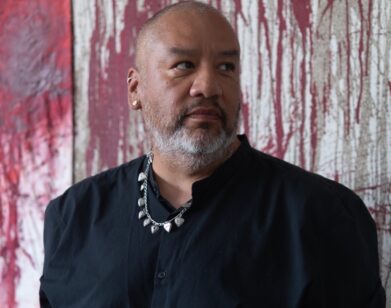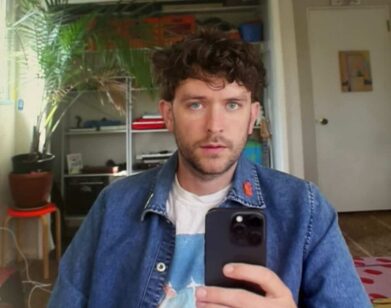Where the Sidewalk Ends
After modernism came postmodernism; but what comes after that? This week at the Rotunda in Miami, London’s Topsafe is presenting an exhibition in conjunction with Art Basel Miami Beach called “Most Oddinism,” a play on postmodernism. The group show, which runs through December 8, will display what it refers to as “Post-Street Art”—the movement that follows the street art movement made popular by the likes of Banksy, Shepard Fairey, and Barry McGee.
“The idea is that now graffiti and street art has moved into this phase where it’s quite established, the artists in this group often reflect that very element in their style of work, so it’s people who began in graffiti, but have a strong reputation in fine art,” said Freddie Fraser-Forsyth, the founder of the London-based production company Topsafe, who curated the show.
That starting point for the exhibition began with Roids MSK—the first graffiti artist Fraser-Forsyth had seen, when he was only 12. “To come up with the concept of the group show, we took two parts of [Roids’s] work, which is typography and abstraction, and then works around that,” explained Fraser-Forsyth. The show, which was held in an abandoned concrete building, featured works by seven artists in addition to Roids MSK—Stephen Powers, Aaron De La Cruz, Christopher Derek Bruno, Ben Eine, Kenji Hirata, Otto Zitko, and Patrick Martinez.
One of the artists, De La Cruz, created a black-and-white giclee print of curves and straight lines that intersect and weave together. “A lot of my work is based in happenings in the moment,” said De La Cruz. “The only inspiration I pull from is text, architecture and balance and composition.”
Martinez reflected on his life in L.A. and growing up in gang culture for his neon pieces. One of them, titled Increase the Peace, which reads “Thugs Need Hugs Daily” in hot pink neon lights, was inspired by his friends in gangs. “Some of them are really insecure and really just like these big teddy bears that are dressed with tattoos and tank tops, and that was always kind of a saying of mine,” said Patrick Martinez.
And what do the artists think of the whole notion of post-street art? “The way I take post-street art is that a lot of us artists in the show have either worked illegally or legally in the street, and using that as a starting platform, and taking that simple form of work and pushed it to where we are right now, whether it be in a gallery setting or architectural setting,” says De La Cruz.
“MOST ODDINISM” RUNS THROUGH DECEMBER 8 AT THE ROTUNDA, MIAMI.
For more of Interview’s coverage of Art Basel Miami Beach, please click here.







